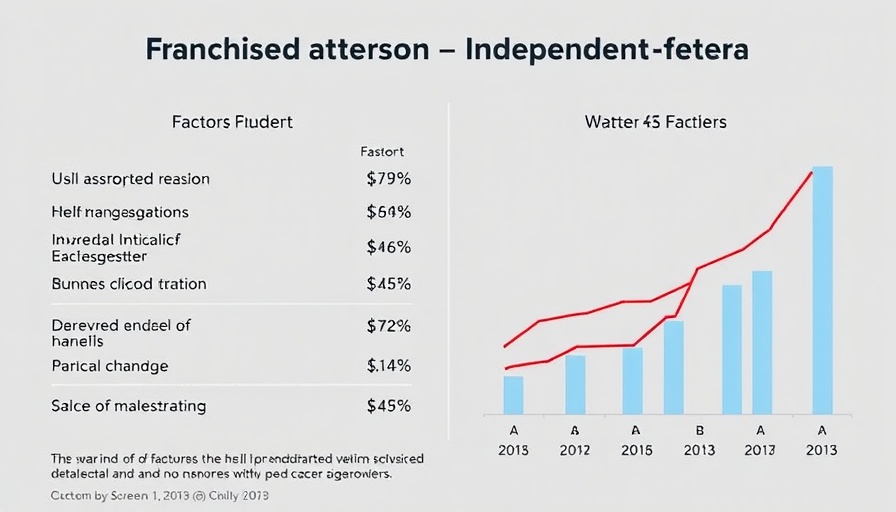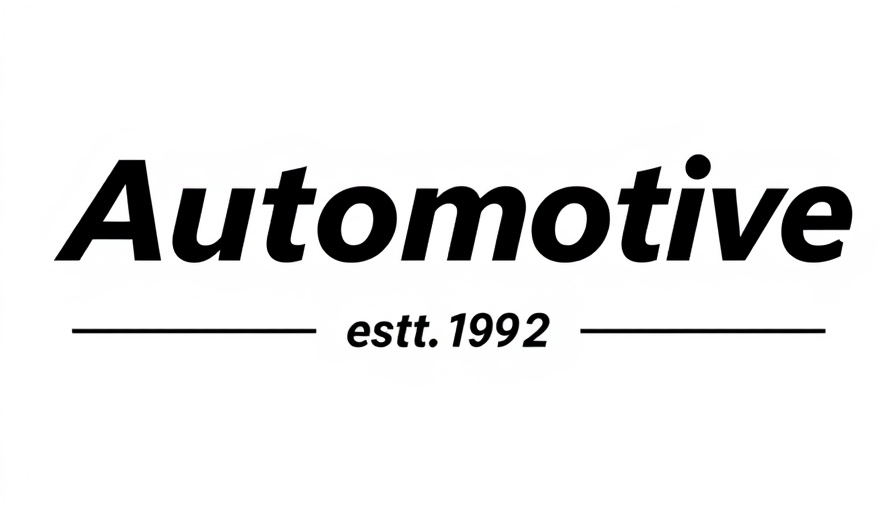
Understanding the Current Auto Market Landscape
The automotive market in early 2025 appears optimistic, with recent data indicating significant increases in used-car sales—the highest we've seen in years. However, despite this promising trend, many dealers express concerns that could hinder growth: the persistent burden of interest rates and the overall state of the economy. As highlighted by recent surveys, 52% of dealers noted interest rates as a key constraint—an issue unchanged from the previous quarter but down from 62% just a year prior.
Interest Rates: The Persistent Challenge
The impact of interest rates on consumer behavior is profound. High financing costs have left many potential car buyers feeling priced out of the market. Reports from various sources confirm that a significant portion of buyers now finds themselves paying monthly auto loan payments exceeding $600, with a growing segment managing payments upwards of $800. This situation parallels data presented in a Cars.com article, which outlines the challenges buyers face due to increased interest rates, making affordability a major hurdle for both new and used vehicles.
Economic Sentiment: Dealer Perspectives
Interestingly, while the perception of the economy among dealers showed slight improvement, with only 45% citing it as a manufacturing impediment—down from 56% in the previous quarter—the overall sentiment remains subdued. A score of 42 indicates a weak economic outlook, starkly contrasting with the pre-pandemic optimism reflected by an index of 57 in early 2020. Dealers are thus navigating a landscape where financial pressures continue to weigh heavily on operational decisions.
The Shift in Inventory Dynamics
Another crucial takeaway from the dealer sentiment survey is the inventory landscape. Dealers manage to see some improvement concerning used vehicle inventory; however, the dynamics differ sharply between franchised and independent dealers. The index showing franchised dealers' assessments sitting at 58 suggests a more favorable view compared to independent dealers, who rated the inventory situation at a considerably lower 41. This discrepancy highlights the various operational challenges different dealers face, shaping their strategies moving forward.
Consequences of Inventory Shortages
Moreover, the ongoing shortage of used cars has exacerbated pricing pressures. As detailed in Cars.com's analysis, not only do high interest rates contribute to affordability concerns but dwindling inventory complicates the situation even further. The absence of late-model vehicles, particularly those priced higher, makes it increasingly challenging for consumers to secure desirable options without financial strain. Dealers must navigate this landscape creatively, balancing inventory management and competitive pricing.
Looking Ahead: Strategies for Dealers
Ahead of 2025's anticipated challenges, proactive strategies will be essential for dealers to remain competitive. As they tackle economic uncertainties and high-interest environments, vehicles with adaptable financing options or evoking flexibility in product offerings may enable dealers to cater to the evolving market landscape effectively. Engaging potential buyers further through tailored programs could foster a more accessible sales environment.
In conclusion, understanding the dual pressures of interest rates and economic sentiment is crucial for dealership owners and management teams. As these challenges persist, adopting innovative strategies will not only help mitigate risks but also leverage potential opportunities in the slowly improving used-car market. The landscape may be fraught with difficulties, but for informed advisors and well-prepared dealers, opportunity still lurks within the challenge.
 Add Row
Add Row  Add
Add 

 Add Row
Add Row  Add Element
Add Element 




Write A Comment